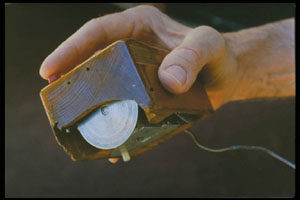About a year ago I ran across this article in the
New York Times titled,
Learning in Dorm, Because Class is on the Web (two pages, make sure you click through to page two) and I'd like you to take 5-10 minutes to read it. Go ahead, go read it, then come back.
This
article illustrates that many colleges – which most of you will be
attending in 3-4 years – are starting to utilize some of the same video
techniques we’re trying to use in our Algebra class. There are a variety
of different ways colleges are using this, some are pretty similar to
what I’m doing, others are very different (consider yourself lucky, you
only have to watch 8-10 minutes of me, not an 85 minute streamed
lecture!).
Note that some colleges are doing this primarily for financial reasons,
You have X amount of money, what are you going to do with it?
others are exploring whether it can be a more effective way of delivering instruction,
She said an advantage of the Internet is that students can stop the lecture and rewind when they do not understand something.
No matter the reason, it appears likely that more classes will be offered this way by the time you get to college.
We see this as the future of higher education.
So
consider our Algebra class a chance not only to learn Algebra (and
enjoy my amazing wit), but an opportunity to begin preparing yourself to
be successful in college – and beyond – by learning how to learn
through online components of courses.
Notice how some students don’t like this approach.
In
a conventional class, “I’m someone who sits toward the front and shares
my thoughts with the teacher,” she said. In the 10 or so online courses
she has taken in her four years, “it’s all the same,” she said. “No
comments. No feedback. And the grades are always late.”
This is one of the reasons why I believe hybrid classes – where there’s an online component
and a
face-to-face component - are perhaps currently the best of both worlds
when done well (although that may change as we get better at
implementing online courses). The way I've tried to structure our class is inquiry first - we explore the ideas together in some kind of context - and then you watch the video outside of class to reinforce the skill and to help you go from the more concrete to the abstract. But several things have to happen in order
for classes like this to work.
First, students must
watch/complete the “lecture” video portion of the
class outside of class. Clearly some college students – as well as some
of you – are not doing this. If this part isn't done, the entire model
falls apart because the videos outside of class allow us the time in class for inquiry.
Second, just as critically, students must
be active participants in class to maximize the value of our time
together. Students must be willing to use class time as an opportunity
both to explore and to practice mathematical ideas and concepts, not as a
time to sit back and be “told” or “shown” what to do. This is why I
continue to try to get you guys to think more on your own, to talk and
work in your groups, and to take risks in your learning, instead of
simply waiting for me to show you the “right” answer.
So
I’m hopeful that as we continue with this approach we all will get
better at it. I need you to hold up your end of the bargain
(watch/complete the videos outside of class - including the Guided
Practice and Self-Check portions, complete the online
pre-assessments on the Moodle, actively participate/explore/think in class, and come
in for help and to re-assess), and I hopefully will get better at
structuring class to complement the video instruction outside of class.
Together we can not only help you master Algebra, but prepare you to be
successful learners in college and beyond.
So what do you think? Are you planning to go to college? If so, what are your feelings about the fact that you undoubtedly will have a large online component? If not, how do you feel about online training in general, as many jobs that don't require college now require that type of training?
What about Algebra - given that this is how I've structured the course, is there anything you can be doing better to maximize your chances for success? Be specific. Is there anything I can be doing better (keeping in mind that the basic hybrid nature is not going to change)? Do you have any other thoughts about above article and my thoughts regarding it?
(Bonus: While not specifically about using video,
this post I wrote a while back is also about higher education - specifically, the University of Virginia, and the expectation that students do the preparatory work outside of class and then come in and be active participants in class. You might be interested in reading
my post and the
linked article).

